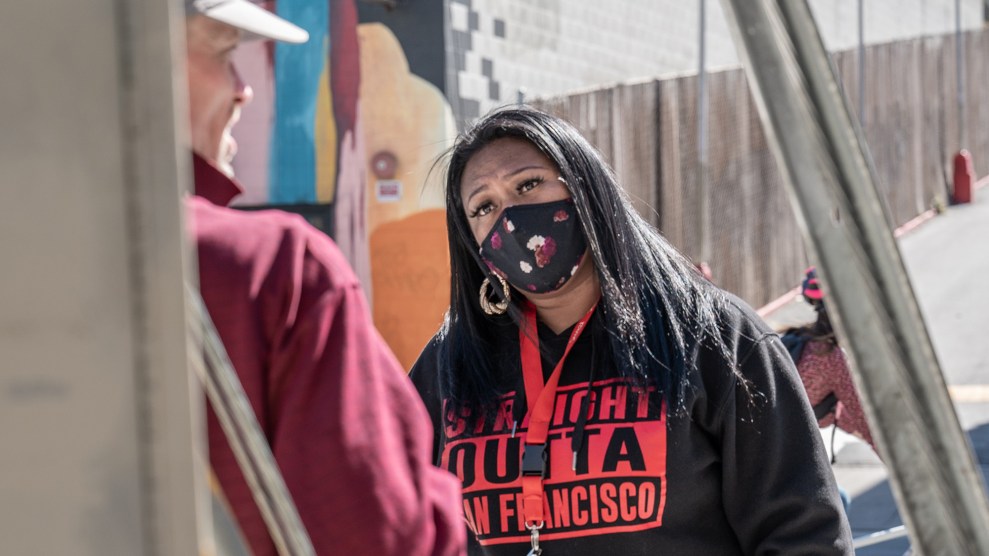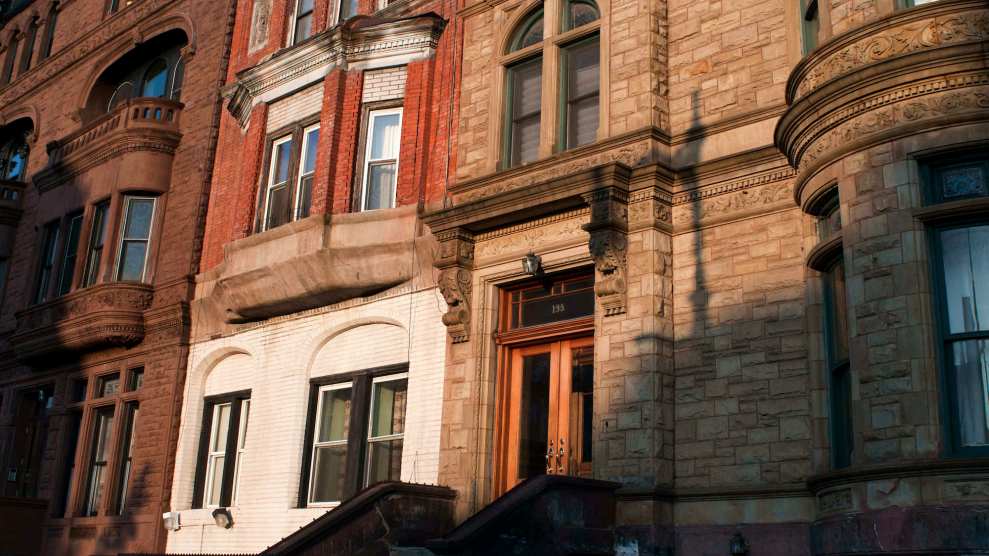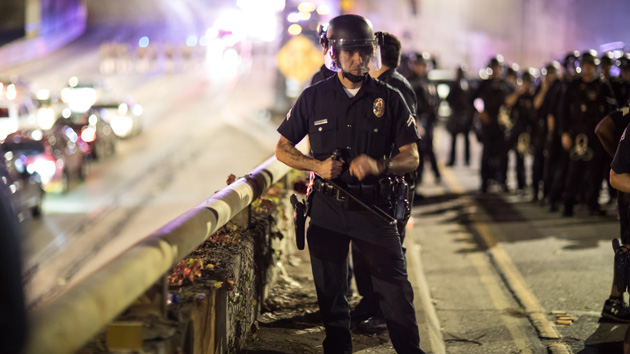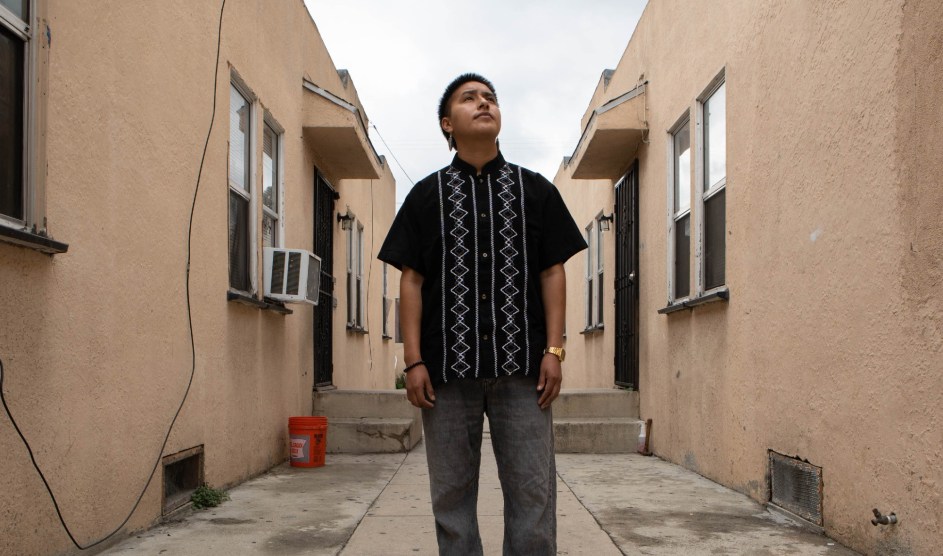
Beni Benitez stands outside of his home in South Los Angeles, a neighborhood a few miles south of the Los Angeles Police Department's helicopter landing site.Isabel Avila
This piece was published originally by Capital & Main.
Los Angeles’ police and sheriff’s departments have amassed among the largest helicopter units of any local law enforcement agencies in the world, costing city and county residents tens of millions of dollars each year for patrols that disproportionately hover over low income communities of color, according to government records.
The helicopters have hovered for decades with little evidence of their necessity. The departments’ claims about the effectiveness of aerial patrols rely mainly on studies they conducted more than 50 years ago. Recent, comprehensive tests suggest no correlation between the use of aerial patrols and declines in crime rates, and that such patrols cost more than they’re worth in terms of benefits, according to a review of the research and interviews with experts.
A university research team is looking at whether the flights may be disrupting sleep and causing health problems, with disproportionate harms in low income Black and brown neighborhoods. And advocates like Beni Benitez, 22, are calling to shift funds out of helicopter units and into improving access to education, housing and other necessities. “Why is it that we’re still funding these systems that keep oppressing us, and hurting us and harming us, when the solution is investing in us?” he said.
When a Hughes Aircraft Company salesman pitched Los Angeles’ police and sheriffs on a “flying police car” in the mid-1960s, urban unrest, especially the Watts revolt in 1965, convinced both agencies to test frequent aerial patrols as a way to control racial justice protests by surveilling neighborhoods and coordinating officers on the ground.
Los Angeles law enforcement agencies’ desire to test helicopters coincided with President Lyndon B. Johnson declaring a “war on crime” and setting aside money for local law enforcement agencies.
The Los Angeles County Sheriff’s rented three Hughes helicopters and obtained the biggest law enforcement grant ever awarded by the federal government to test patrols in 1966. The authors of the report on the pilot program, Project Sky Knight, claimed chopper surveillance could prevent crime and “multiply force” by making law enforcement visible and audible across wide swaths of the landscape.
The LAPD conducted a similar federally funded test of helicopter patrols soon after, supported by NASA’s Jet Propulsion Laboratory, which also touted the benefits of aerial policing, including for reducing property crimes and increasing arrests.
Once effectiveness was “proven” by both agencies, Aviation Unit Chief Hugh MacDonald, who helped spearhead Sky Knight, retired from the sheriff’s department and joined Hughes Aircraft in using the reports to market helicopters to other law enforcement agencies, hundreds of which adopted the aircraft.
The federal government continues to fund local law enforcement helicopter units. The Justice Department has given more than $2 million to such units since 2008. The Department of Defense has also donated more than 300 “demilitarized” helicopters, originally valued at $94 million overall, to sheriff’s, state police and highway patrol departments in 30 states since the 1990s. Florida, Alabama, California, Tennessee and Texas sheriffs have received most of those helicopters.
Los Angeles’ police and sheriff’s departments now maintain at least 17 helicopters each and keep those choppers in the air for regular day and night patrols.
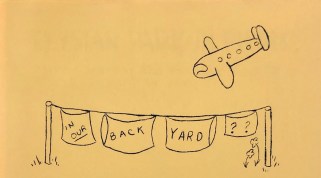
This drawing of an aircraft hovering over residential areas topped a 1969 flyer distributed by activists in protest of proposals to build a helicopter landing site near Los Angeles’ Elysian Park.
To this day, the LAPD’s Air Support Division defines its “functional objectives” based on the early study, according to its policy manual. The department also promotes the NASA study on its website.
But even if the findings weren’t outdated, they were likely inaccurate to begin with, experts said.
The federal government itself has acknowledged that “historically, the debate regarding the benefits and costs of airborne policing has been void of rigorous evaluation and empirical data,” according to the National Institute of Justice’s most recent review of law enforcement helicopter operations in 2012.
Nicholas Shapiro, a University of California, Los Angeles, professor who is currently studying the health and climate impacts of law enforcement helicopters in Southern California, said, “There’s just huge logical leaps” in the early studies.
Shapiro’s research team identified fundamental problems with the crime predictions and comparisons underpinning the LAPD helicopter study, such as conflating increased arrests with prevented crime and comparing real crime rates to modeled predictions. The study’s authors also excluded data from 1965, when the Watts riots occurred, because they acknowledged this data would skew their results.
Elliot Framan, a researcher who worked on the 1970 study of LAPD’s helicopter program, said an updated review would be warranted. “Clearly, police procedures and equipment, much less the situation on the ground, have changed enormously,” he said. “A new study might be more effective and worthwhile.”
Paul Whitehead, a sociologist and professor emeritus at the University of Western Ontario, agrees that the early studies were flawed. Whitehead was invited by the city of London, Ontario, Canada, to conduct a more recent study of helicopter patrol effectiveness in 2000.
The early studies had “very poor research designs,” Whitehead said, which “lead to serious questions about the validity of their findings.” Many were “done with the purpose of finding the evidence that helicopters improved policing. And everything was aimed at reaching that conclusion even before the first piece of data was collected,” he said.
As such, Whitehead sought to address those deficiencies in his own study, which remains the most comprehensive of its kind.
Whitehead found that helicopters did not reduce crime rates and, because they were so expensive to buy and operate, any cost savings that came from using them for patrols did not come close to equaling their expense.
“Do helicopter patrols reduce crime? The answer is no,” Whitehead said.
Since then, a more limited test in 2019 by four police districts in Sweden similarly found that helicopter patrols had no significant effect in deterring crime.
As Los Angeles’ helicopter patrols persist, some residents are raising concerns that the flights may be disproportionately targeting Black and Latino neighborhoods, harming the mental and physical health of their residents.
Over the years, the LAPD has internally tracked limited data on its helicopter flights, and used that data, along with predictive policing algorithms, to plan hundreds of flights each month. The department flew more than 6,000 of these data-driven missions in 2021, which is a 30% increase since 2019. But many of the metrics the department documents replicate problems from its early study and appear to generate patrols mostly targeting low income communities of color.
This use of data “provides a sort of technological veneer to reaffirm the kinds of policing practices they’ve already been historically engaged in,” said Andrea Miller, a Pennsylvania State University professor who studies the relationship between technology and security. Miller said that when police departments like the LAPD use past crime data to predict future crimes and decide where to concentrate their patrols, it creates a cycle wherein the most policed communities continue to be overpoliced.
Areas in South Los Angeles, including the 77th Street, Southwest and Newton police divisions that cover neighborhoods including Hyde Park, Crenshaw and Historic South Central, are among those most frequently patrolled by police helicopters and for the longest time, according to LAPD records.
Residents have noticed the persistence of these patrols.
Neighborhood associations have protested against law enforcement helicopters since the flights began in the 1960s, mainly because of air and noise pollution. At the time, Silver Lake residents thwarted the LAPD’s effort to build a heliport in Elysian Park. But by the 1980s, the police department built the world’s largest law enforcement helipad in downtown, allowing for today’s around-the-clock flights.
“I feel like I’ve never lived in a place where helicopters weren’t disturbing the peace,” said Tauheedah Shakur, 26. She grew up in South Los Angeles but recently moved to the Westlake neighborhood near MacArthur Park because of rising housing costs. Shakur said that helicopter noise and lights often wake her in the night, heightening her anxiety, which can cause panic attacks. She worries that police officers observing from the sky could someday mistake her for a threat.
“I’m just afraid that one day they’ll get trigger happy from the helicopter and shoot me in my community. These are constant things I worry about,” Shakur said. Concerns like those are what a team of researchers at UCLA are setting out to study.
Environmental scientist Nicholas Shapiro is examining whether Southern California’s law enforcement helicopters are disrupting sleep and negatively affecting mental and physical health, educational attainment and workplace performance.
Gina Poe, a UCLA neuroscientist specializing in sleep studies, and Kate McInerny, a UCLA student, are working with Shapiro to measure how loud the helicopters sound at different distances and altitudes. They will pair that sonic map with flight records to figure out how much the noise disturbs sleep in various neighborhoods.
The researchers are also studying whether there are racialized disparities in where agencies are concentrating patrols. Their preliminary analysis suggests patrols tend to fly more frequently over Black communities, for longer durations and at lower altitudes, which could have greater health effects.
Although the Federal Aviation Administration typically regulates how low aircraft can fly, law enforcement helicopters are exempt from those restrictions and often hover below the altitudes permitted for other flights.
Flying low has caused at least one situation when helicopter noise prevented officers on the ground from hearing each other, with deadly consequences. In July 2021, LAPD officers in two separate cars responded to a call about a man with a knife. As the helicopter chopped overhead, the officers who arrived later couldn’t hear confirmation that the man was no longer armed and fatally shot him. The California Department of Justice is investigating the shooting.
The LAPD did not respond to Capital & Main’s questions and said it was “unable to accommodate [our] request” for a ride-along on a helicopter flight.

Kenneth Mejia, an accountant recently elected to oversee Los Angeles’ finances as city controller, said that in his new position he will audit the police department’s performance, with a focus on helicopter operations, because they are an expensive part of everyday life for Angelenos.
Mejia said a proper audit of the helicopter unit would look at how funds are being spent and determine if any of that money could be better allocated to other services, departments, resources or assets, such as housing assistance, animal services or youth development.
“Everyone wants to know, why do we have so many helicopters?” Mejia said. “Is that money being used efficiently? Effectively? Is crime going down? Are the helicopters actually doing something? If so, show us the numbers.”
The police budget in Los Angeles is currently around $3.2 billion, almost half of the city’s discretionary funding and 30% of the entire budget. Costs include the initial purchase of helicopters and specialized software and equipment like cameras and searchlights. Then there are ongoing expenses like maintenance, insurance and fuel, as well as the costs of training and employing flight personnel and outfitting them in safety gear.
High costs have led some agencies to scale back their helicopter operations in recent years. The police department in Kansas City, Missouri, was an early adopter that rapidly expanded its unit in the 1970s. But by 1995, the department reduced its aerial personnel from 30 to eight. And in 2001, it shrunk its fleet from seven to three helicopters.
In Los Angeles, neither the police nor the sheriff’s department release their total helicopter budgets, and public city and county databases do not clearly identify expenses associated with aerial operations. But Capital & Main identified at least a portion of those costs by compiling city spending records.
The LAPD’s helicopter unit cost at least $215 million over the last decade.
The LAPD Air Support Division spent at least $27 million in 2021, including roughly $7 million for new helicopters and equipment, $5.2 million for maintenance, $3.6 million for parts, $1.5 million for labor, $1.3 million for fuel and at least $8.5 million in payroll, according to city records.
Since 2009, the LAPD has spent at least $43 million on helicopters, equipment and training. Some specialized equipment has also been donated by the Air Support Angels Foundation valued at $138,300 in 2022 and a total of almost $50,000 in the three years prior.
The city of Los Angeles also spent about $77 million on maintenance, $50 million on parts, $27 million on labor and $19 million on fuel for the LAPD’s helicopters between 2010 and 2021, according to city records.
The Los Angeles City Council created a Youth Development Department in 2021, and funded it with $1.4 million. This year the council increased the budget to $2.5 million. That is roughly equal to the cost of fuel and infrared cameras for helicopter policing last year.
Capital & Main requested budget and operations records from the Los Angeles County Sheriff’s Aero Bureau but the department did not provide them. In 2020, the Sheriff’s said that helicopter maintenance alone costs at least $23 million per year. The Sheriff’s total budget this year was $3.6 billion, but because its Aero Bureau is paid for through a “specialized and unallocated” account, it’s unclear how much of that is spent on helicopters.
The Aero Bureau has been accused of misspending in the past. In the 2010s, retired Sergeant Richard Gurr alleged that a $29 million Board of Supervisors-approved contract to update 12 helicopters included millions in overcharges and unnecessary equipment. Los Angeles County’s auditor-controller investigated this and other alleged improprieties in 2012 and found that most were unsubstantiated, although there were “weaknesses” in the bureau’s purchasing practices, such as a lack of competitive bidding for repair services.
Last year, the county audited the Sheriff’s Department and found that it failed to get permission before building a helicopter landing pad on private property near Sheriff Alex Villanueva’s home. Villanueva lost his reelection campaign and will be replaced by Robert Luna, a former Long Beach police chief.
The Los Angeles County Sheriff’s Department declined to respond to Capital & Main’s questions and requests for public records.
